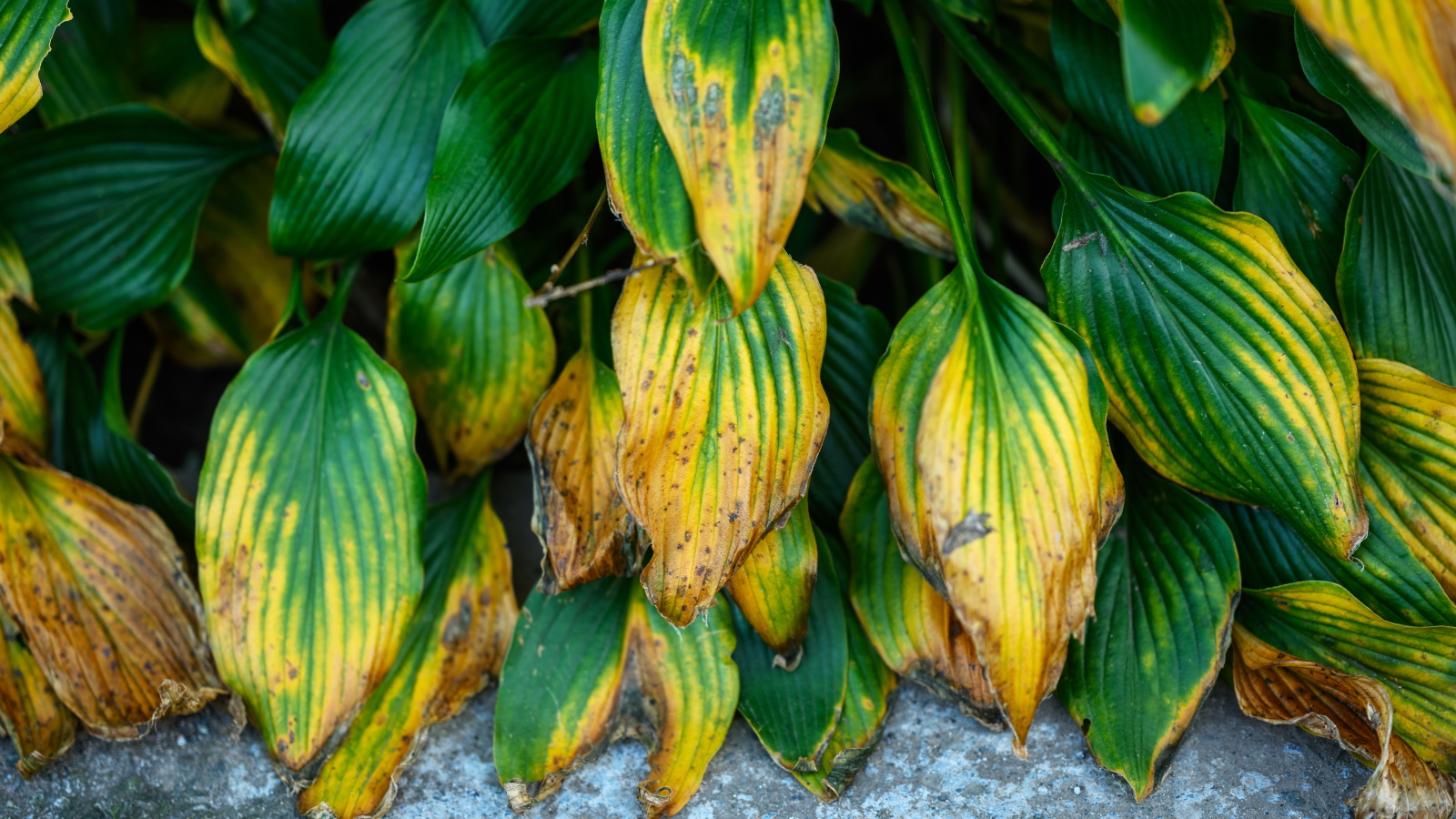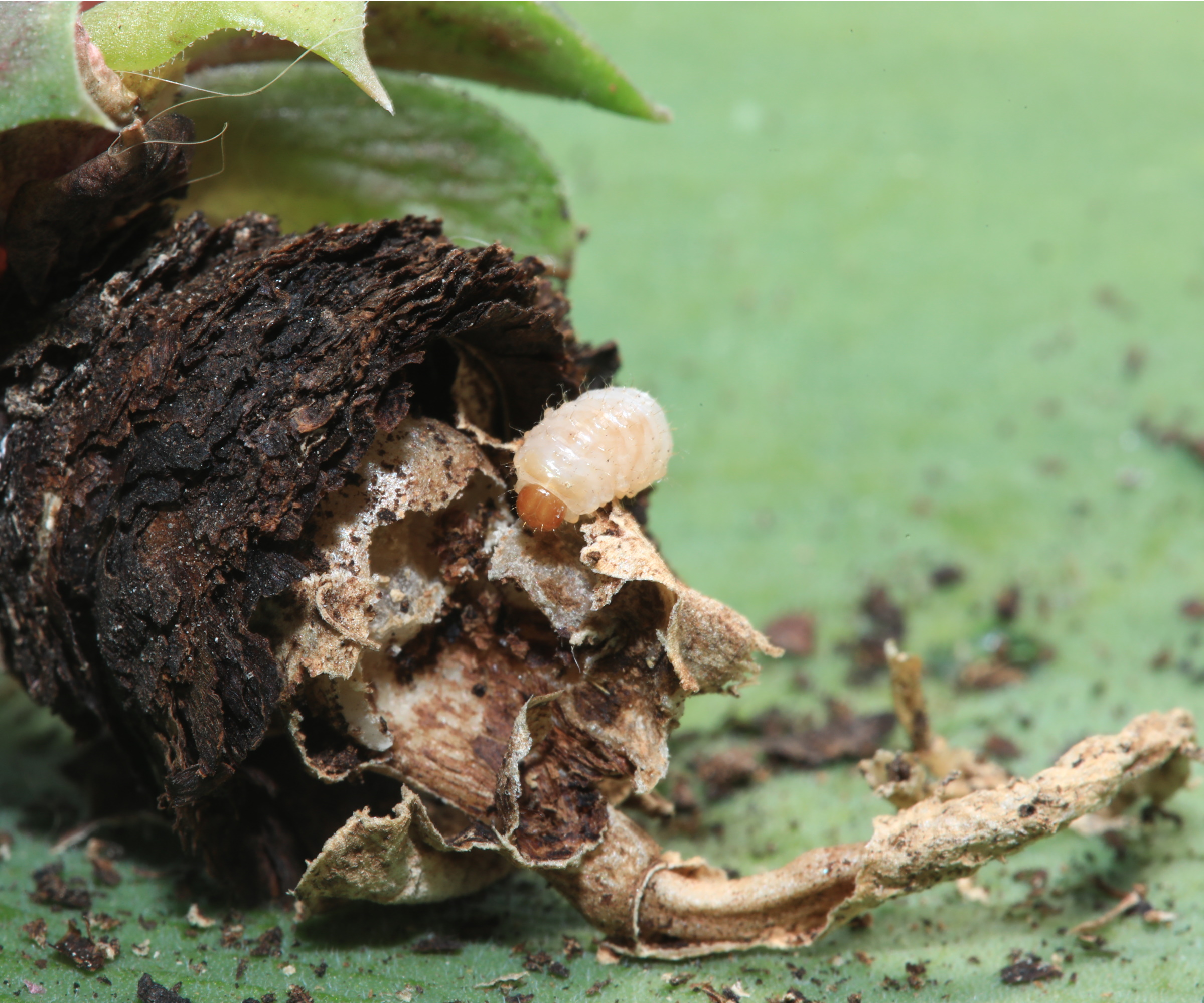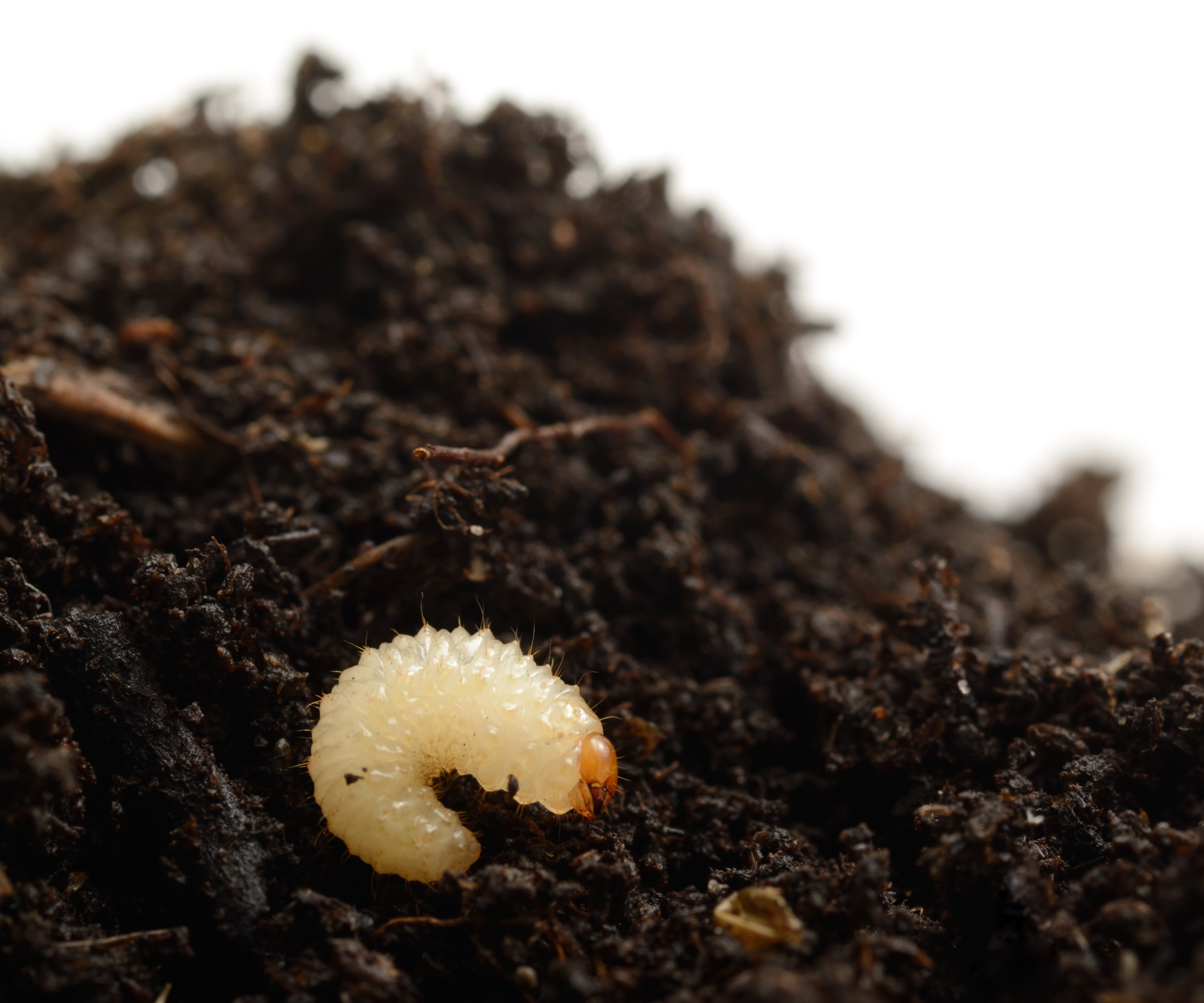
The list of pests to deal with is seemingly never-ending when you're a gardener. One you might not be aware of, due to it living beneath soil level, but can cause significant damage is vine weevil grubs.
You might have heard of vine weevils - the black insect found feeding on a wide range of plants, largely those in a container garden. Well, the larvae (vine weevil grubs) are also something to familiarize yourself with. The grubs live in the soil and have a white, worm-like appearance with a brown head.
You'll know if you have a problem with this pest that can destroy plants if you notice a certain set of symptoms among your plants, as well as spotting the adult weevils. But don't fret, because we've compiled all the information you need about how to get rid of vine weevil grubs for good.
Signs your plants have vine weevil grubs

When your plants are struggling, it can be tricky to determine what's causing the problem when many pests and diseases often cause the same symptoms. However, pest control experts outline a few things to look out for that might indicate you have vine weevil grubs in your yard.
'Vine weevil grubs live underground, so most of the damage they cause is going to initially appear on plant roots and the lower part of the stem,' says Allan Bossel, pest control expert at BBE Bed Bug Exterminator.
As for targeted areas of your garden, vine weevils and vine weevil grubs tend to favor potted plants. 'This is because their root systems are usually restricted to a small area, making it easier for the grubs to quickly overtake the plant and cause irreversible damage,' Allan explains.
Root damage can in turn cause a quick discoloring of foliage and wilting. 'Girdling is when the grub feeds on the vascular tissue just below the back on the trunk (main stem). The vascular tissue (specifically xylem and the phloem) moves water and nutrients through the plant. Once this is damaged and destroyed, the plant yellows and dies,' explains Sean Greenhow, CEO of Greenhow Pest Control.
However, these symptoms can also be caused by garden watering mistakes, fertilizing mistakes or other pests and diseases. To confirm it is vine weevil grubs, gently lift your plants and observe the lower soil and roots - this is where you'll see the white larvae.
While vine weevil grubs aren't too particular about which plants they attack, there are some to note: 'Vine weevil grubs can attack most herbaceous ornamental plants, including fuchsias, begonias, hostas, heucheras, and primroses. They're also known to attack rhododendrons, camellias, azaleas, and hydrangeas, especially the younger plants that still have tender roots,' Allan notes.
How to get rid of vine weevil grubs

To avoid making pest control mistakes, it's best to understand how to get rid of vine weevil grubs for good. A lack of action will only make the problem worse, risking damage to more of your plants.
'Because they dwell below the soil, vine weevil grubs can be very difficult to control using chemical means,' notes Allan. 'If the infestation is bad enough to cause potentially extensive damage to the plant's root system, then it might be a good idea to uproot the plant, remove the grubs physically, and repot the plant after a bit of root pruning,' he suggests.
You can lift your infested plant using the same technique as lifting and dividing plants - using this trowel from Amazon, gently lift the plant up out of the pot, taking care not to damage any roots. To then prune away any damaged roots, use these shears from Amazon or other essential pruning tools, just as you would for pruning houseplant roots.
You might choose to remove the soil of your plant entirely, wash down the roots and replant with fresh soil. 'You can also try mixing neem oil with water and soap to make a spray that can help control or kill adult grubs and disrupt the life cycles of their offspring, although the efficacy of such a practice is difficult to predict,' says Allan.
As an extra precaution, pest control experts recommend using beneficial nematodes (available at Amazon). These are microscopic organisms that are predatory to a range of plant pests. 'They can control vine weevil grub populations without harming your plant,' explains Allan.
Above all, make sure to also get rid of adult vine weevils to prevent more vine weevil grubs. 'Adult weevils can be physically removed. They typically visit the plants at night to feed on the leaves,' says Allan.
FAQs
Do vine weevil grubs survive winter?
Typically, vine weevil grubs will feed on plant roots until fall. During the coldest months, they will dive deeper in the soil and then continue feeding when temperatures rise again in spring. At this point, they turn into adult vine weevils and start feeding on plant foliage.
Make sure to continue observing your infested plants even after getting rid of vine weevil grubs to prevent another infestation. If you notice similar symptoms on your lawn, you might find our guide to getting rid of leather jackets useful. These are the larvae of crane flies and, similar to vine weevil grubs, feed on the roots of lawn and leave discolored, dead patches of grass.







